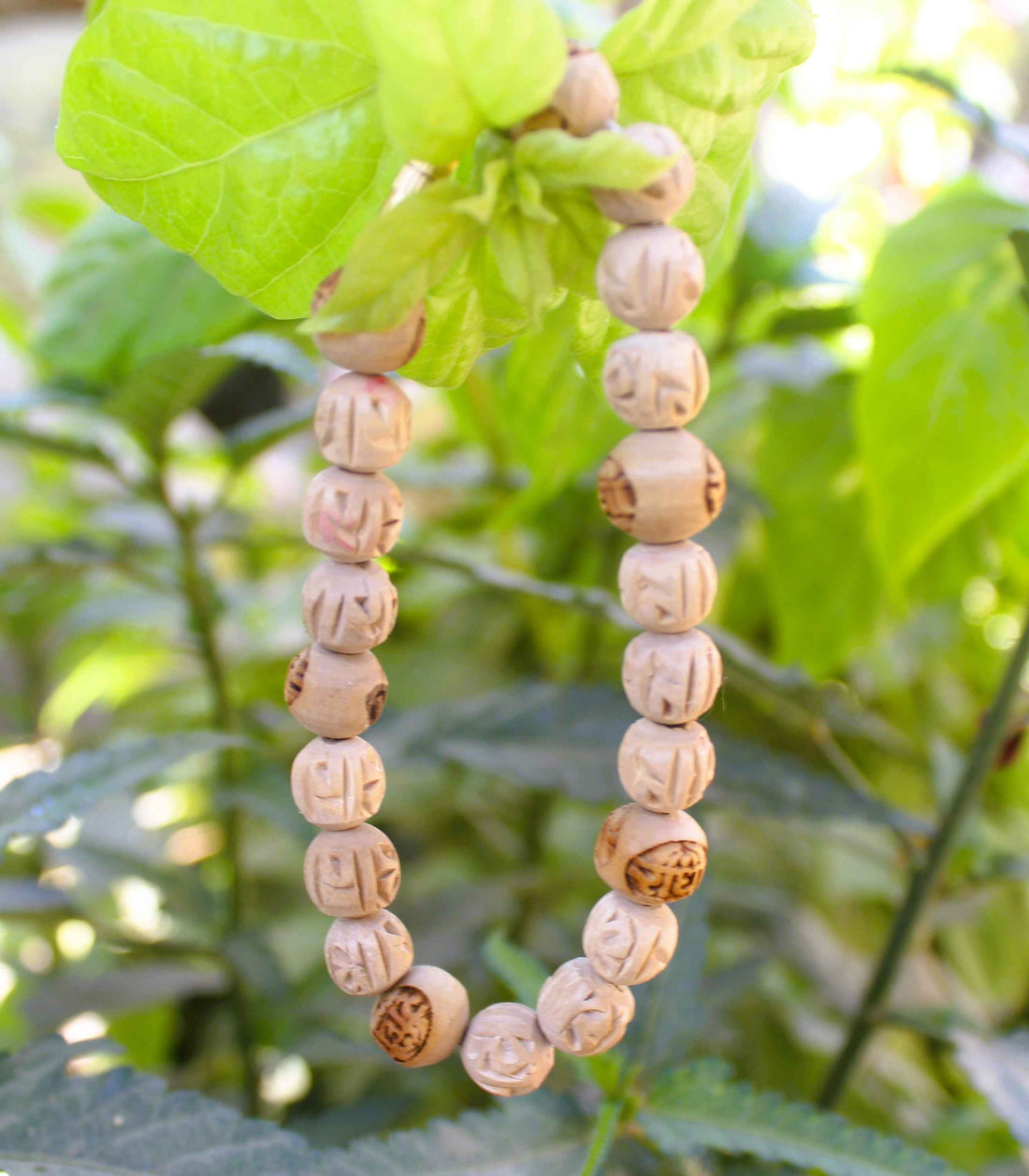
Can I Wear Tulsi Mala If I Eat Onion and Garlic
Share
Tulsi mala, made from the sacred Tulsi (Holy Basil) plant, holds immense spiritual value in Hinduism. It is widely used for chanting mantras, meditation, and maintaining positive vibrations around the wearer. However, a common question arises: Can someone wear Tulsi mala if they consume onion and garlic? Let's explore this deeply from a religious, spiritual, and practical perspective.
Understanding the Spiritual Significance of Tulsi Mala
The Tulsi plant is revered as a manifestation of Goddess Lakshmi and a close consort of Lord Vishnu. Wearing a Tulsi mala is believed to purify the body, mind, and soul, while promoting spiritual elevation and peace. It is often advised for devotees of Lord Krishna, Vishnu, and Hanuman.
The mala is not just an ornament; it is treated as a sacred thread that creates a protective aura and enhances spiritual practices like chanting and meditation.
Why Are Onion and Garlic Considered ‘Tamsik’?
In Ayurvedic and spiritual traditions, foods are categorized into three types:
- Satvik (pure and light): Fruits, vegetables, grains, dairy
- Rajsik (active and passionate): Spicy, salty foods
- Tamsik (heavy and dulling): Meat, onion, garlic, stale food
Onion and garlic fall under the ‘Tamsik’ category, believed to increase inertia, aggression, and worldly desires. For this reason, many spiritual practitioners, monks, and devotees avoid them to keep the body and mind light and receptive to spiritual energies.
So, Can You Wear Tulsi Mala While Eating Onion and Garlic?
Yes, you can technically wear Tulsi mala even if you eat onion and garlic, but with awareness and respect.
Here’s a balanced understanding:
✔ What Tradition Says:
- Strict Vaishnavites and spiritual followers recommend abstaining from onion, garlic, and other tamsik foods while wearing Tulsi mala.
- It’s considered a form of respect for the sanctity of the mala and a means of better aligning with the spiritual energies it invokes.
✔ What You Can Do:
- If you're not ready to give up onion and garlic completely, you can still wear the Tulsi mala, but remove it during meals and while cooking such food.
- After consuming such foods, you may rinse your hands and mouth, and then wear the mala again with a short prayer or mantra.
✔ Spiritual Growth is a Journey:
- Tulsi mala can also become a catalyst for inner transformation. Many people find that gradually, their attachment to tamsik foods reduces as they continue their spiritual practices with Tulsi mala.
Real-Life Application and Respectful Use
If you choose to wear Tulsi mala while still consuming onion and garlic, do so mindfully. It is better to wear it with respect and intention than to avoid it entirely out of fear or guilt.
Remember, spirituality is not about perfection, but sincerity.
Explore Pure and Powerful Tulsi Malas
If you are looking to begin your spiritual journey with a high-quality, sanctified Tulsi mala, consider these divine options from Tulsi Rudra:
- 🌿 Authentic Divine Krishna Locket Tulsi Mala Set – Perfect for positivity and devotion to Lord Krishna.
- 🌿 Tulsi Beads Bracelet – A convenient and elegant way to carry spiritual energy on your wrist.
- 🌿 Radha Krishna Locket Tulsi Mala Set – Infused with devotion and handcrafted purity.
- 🌿 Hanuman Ji Artwork Tulsi Mala – Ideal for protection and strength.
Conclusion
You don’t have to be perfect to wear Tulsi mala—you just need to be respectful and conscious. While avoiding onion and garlic is preferred, it's not a strict barrier unless you're following a specific spiritual vow. Focus on your intention, purity of heart, and the desire to grow spiritually.
Wearing Tulsi mala is a blessing—honor it in the best way you can.
